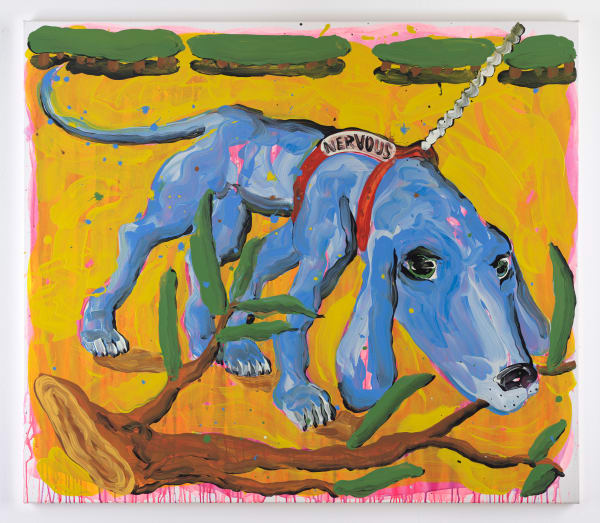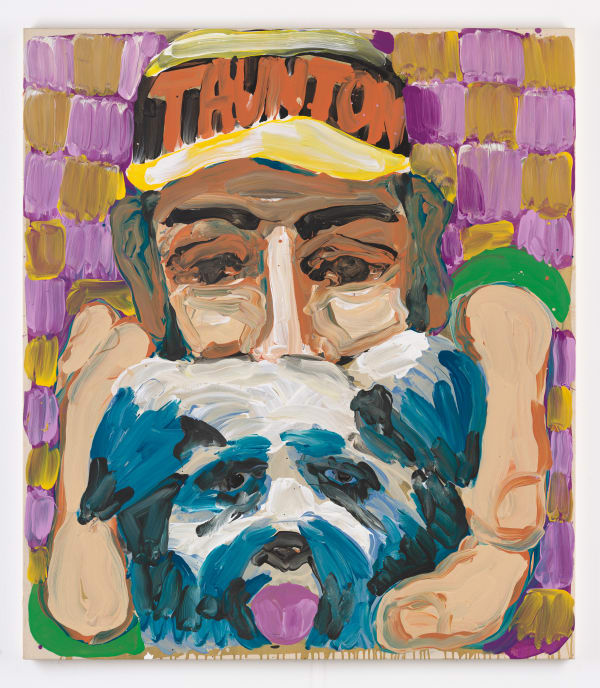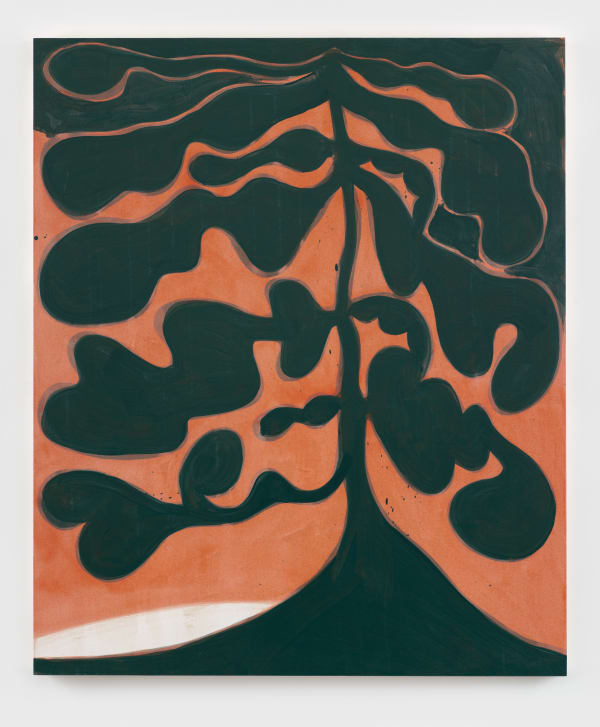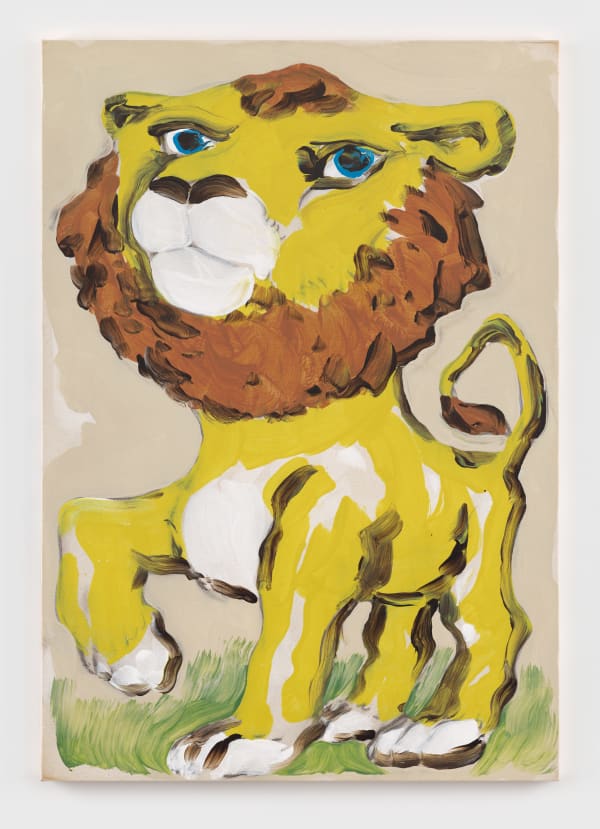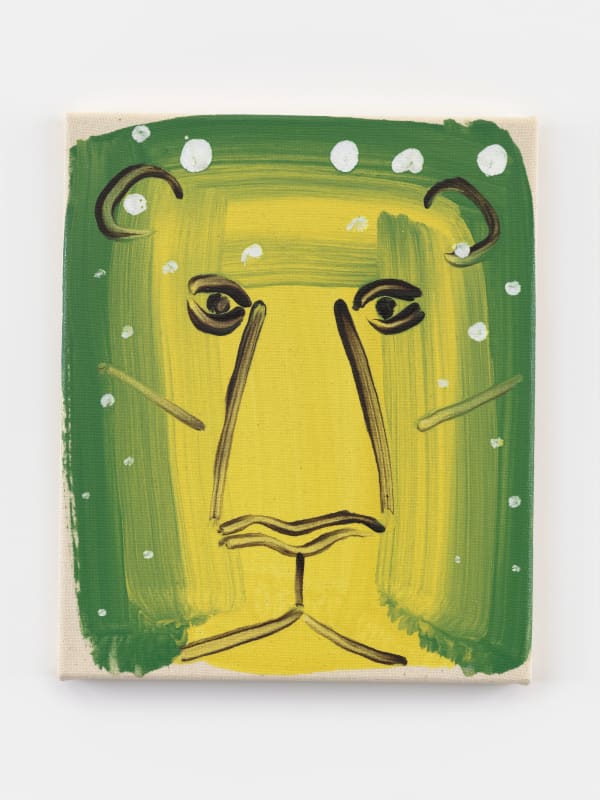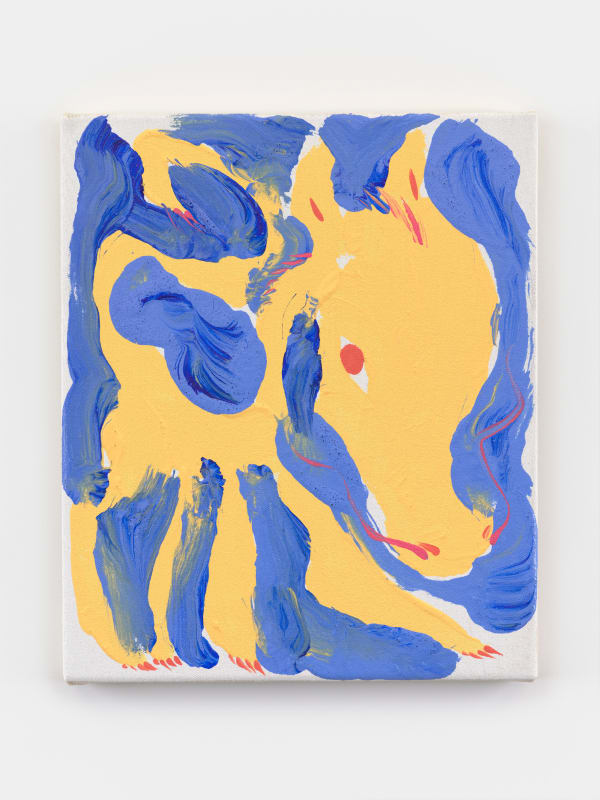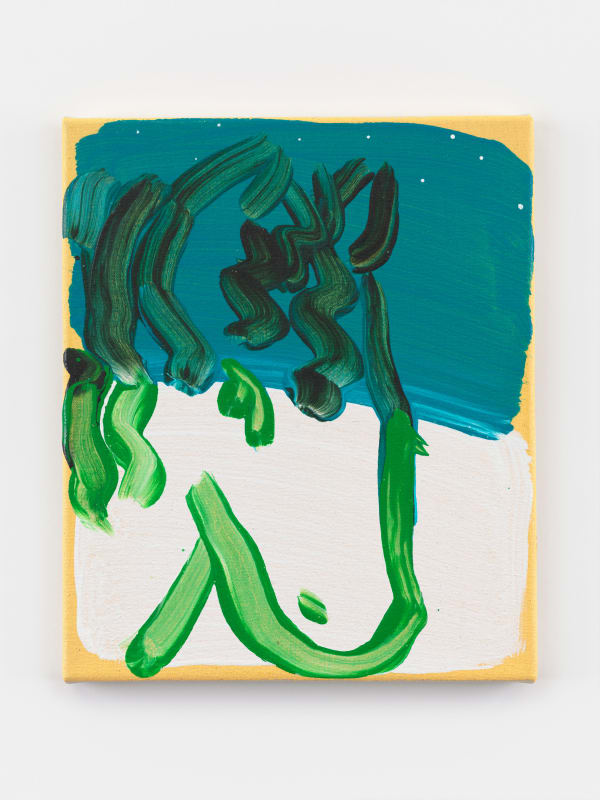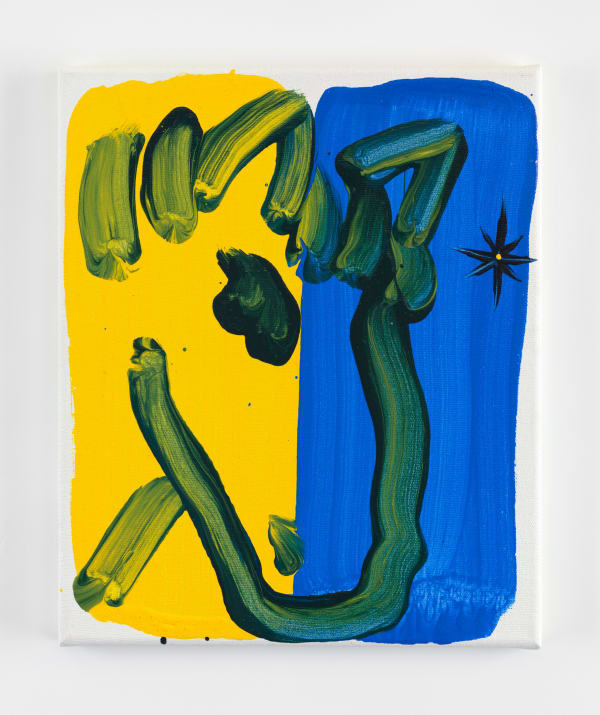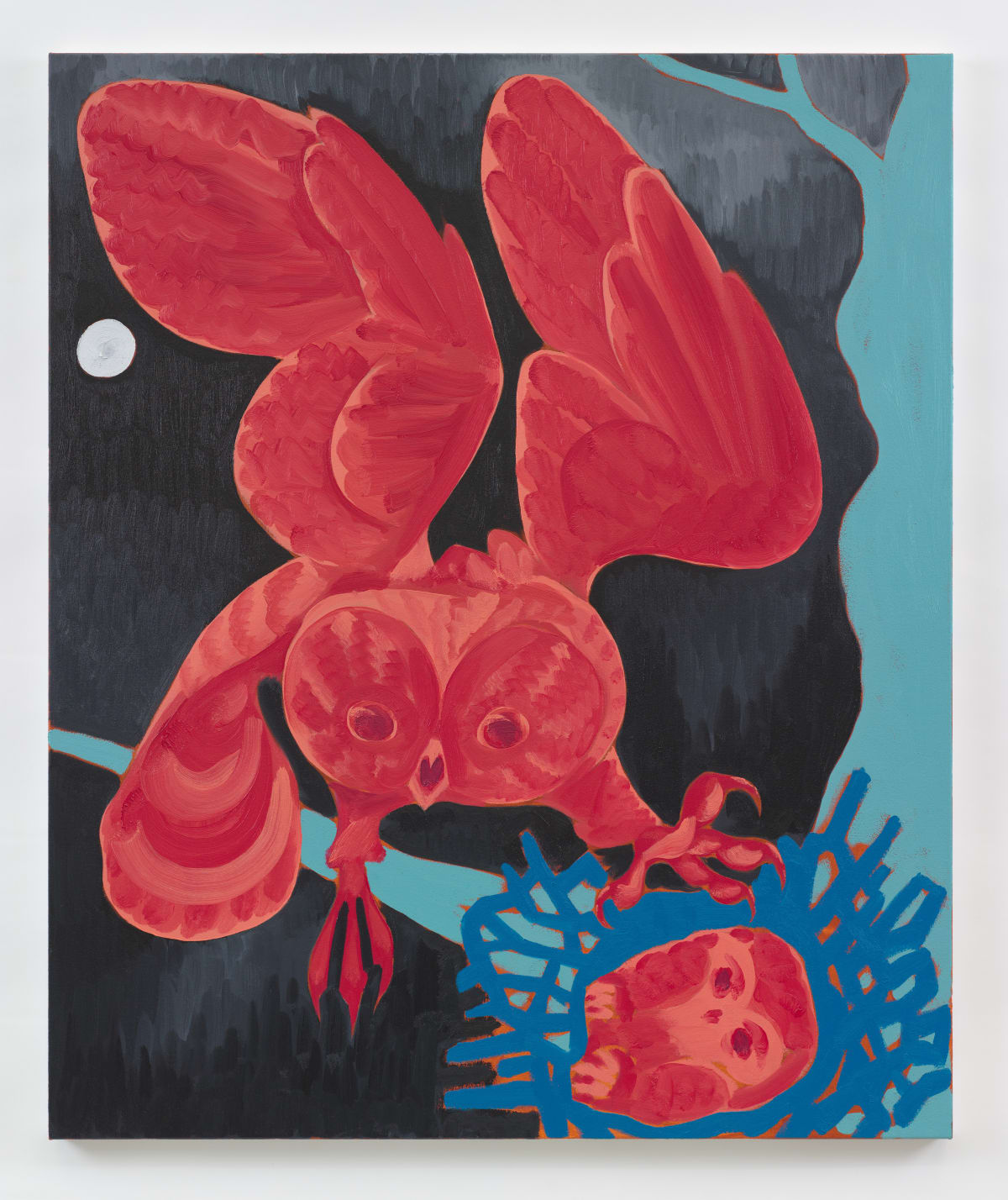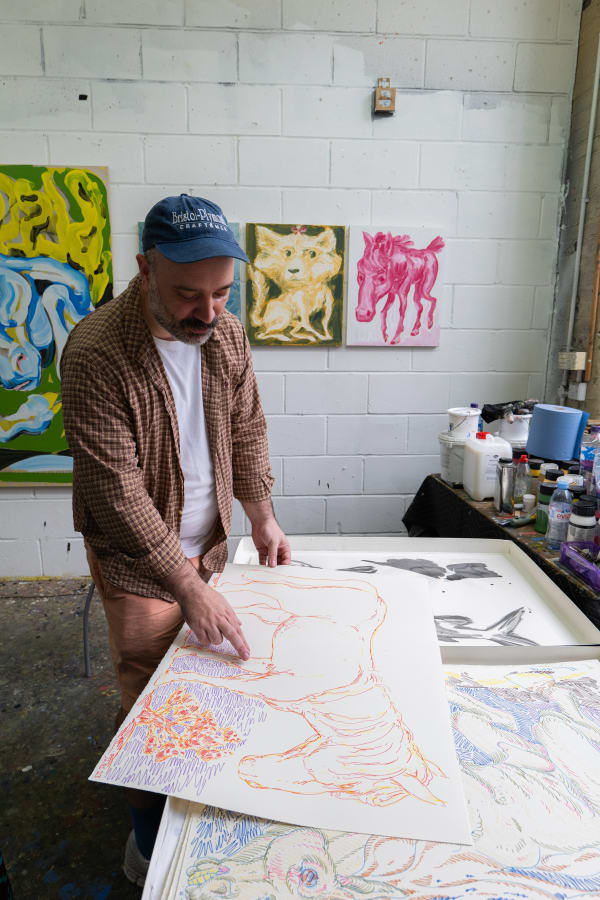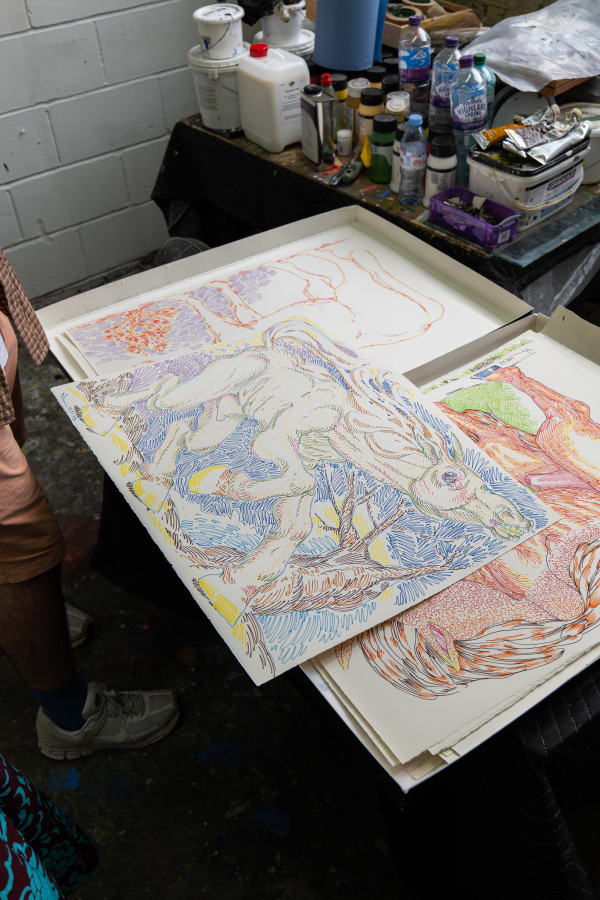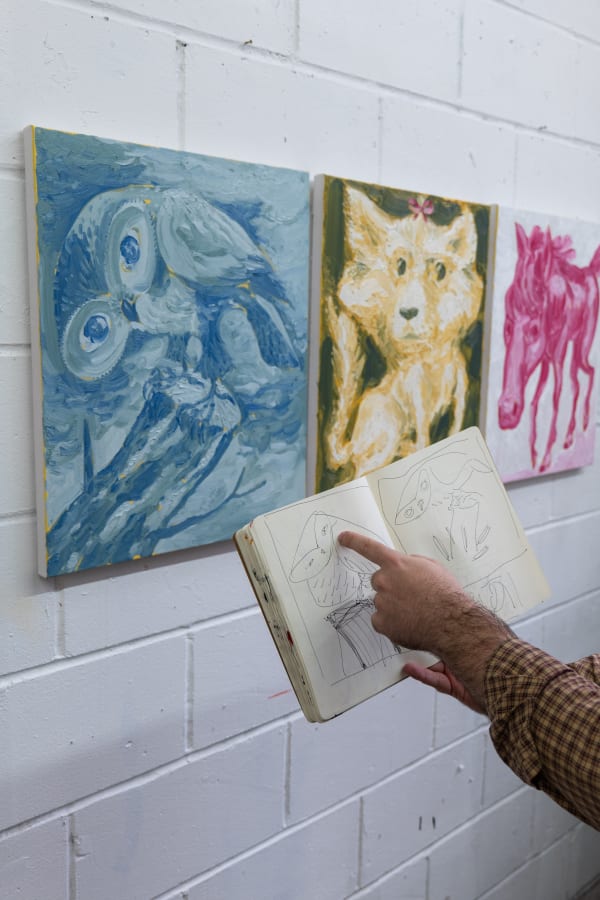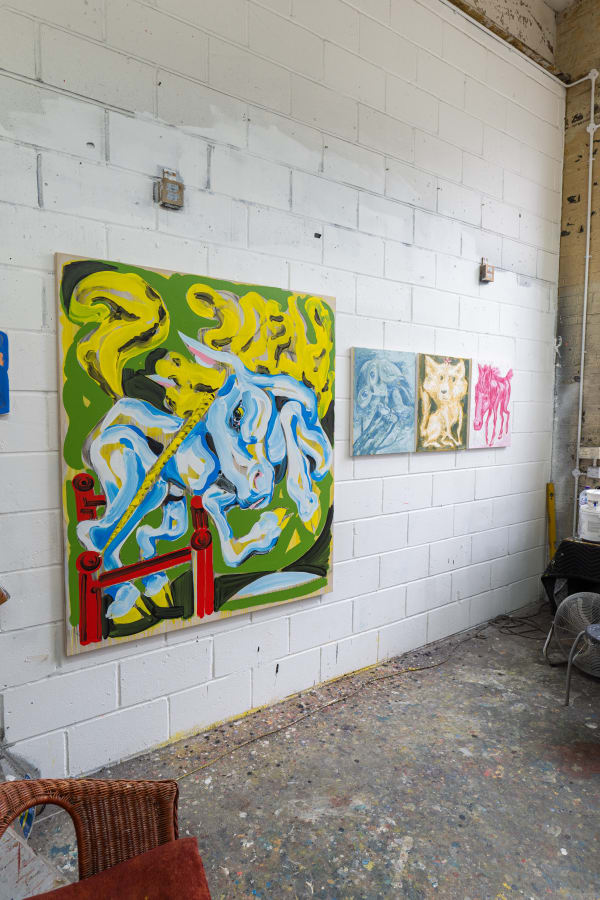David Surman
A journey through time – it crosses one’s mind while travelling
to Deptford on the South Bank of the Thames. Once a
significant dockyard founded in 1513 by Henry VIII whose
Royal Palace in Greenwich was nearby, today the district is
firmly on the cultural map. Rising from decades of doldrums,
it has triumphed as a nerve centre for emerging artists,
designers, musicians. Many of them can be found at work in
the Acme Factory, a former ship propeller foundry on
Childers Street.
'I enjoy working here', says David Surman cheerfully,
offering coffee and a croissant. His space on the ground floor
of the four-storey building bears all the hallmarks of the classic
artist’s studio, its surfaces strewn with canvasses, paints, other
essential tools. Dominating one wall is a large painting of a
female nude in motion, in bold yet nuanced colours. She
wields an axe which, despite its menacing overtones,
represents something distinctly more benign on closer
inspection.
'I was thinking of my mother and sister, cutting
rhododendrons', explains Surman. 'The image portrays the
mental energy one needs when moving from being passive to
productive activity. My aspiration is to communicate vitality,
and my inspiration was Gauguin'.
The French Post-Impressionist painter Paul Gauguin was
preoccupied with spiritual exploration, with a search for
something beyond the material world. This could also be said
about David Surman who channels spirituality through his
art. His expressive works address humanity’s disconnection
from nature, highlighting the environmental crises of our
industrialised world. 'Climate change, the impact of
technology on people’s lives – so many things are wrong.
Nature should be respected but we live in a world where it is
seen as disposable and inconvenient'. As such, Surman – who
works chiefly with oil and acrylics – currently favours animals
as his subject matter. They are, he says, both intrinsically of
nature and a symbol of humanity’s urge to cultivate and tame.
'These are often domesticated creatures because they are
human-like and a mirror for us. I work from my memories,
from personal experience. And I like to tell the story of what I
have seen and how I felt about it'.
Nature has always played an important role in David
Surman’s life. Born 1981 in Barnstaple, a small market town
in North Devon, in childhood he became fascinated by the
nearby village of Combe Martin, which is famous for two
things: the longest street in Britain (3.2 km) and its annual
celebration of the pre-Christian 'Earl of Rone' -Festival, the
latter featuring folk dancing and a host of pagan rituals. “This
had a big effect on me as a kid', he says. Year after year it put
me in touch with the ancient rawness of earth and fertility'.
The oldest of 5 children, Surman’s father served in the navy,
while his mother was a housewife who used her spare time to
draw and sculpt. And, naturally, her passion for creating
wielded a significant influence during his formative years. 'I
became lazy in things that didn’t interest me, he admits. When
one of his teachers said in weary resignation, 'You cannot just
do art, David', his response was simple and uncompromising.:
'I think I can'. Decades later, it’s a line that has served him
well.
Another seminal moment in Surman’s artistic development
came when he was 12 and the family exchanged the south of
England for the rugged wilds of the Western Highlands where
his father took up a job as a game keeper. Through long bus
rides to school, rivalry between English and Scottish kids and
lonely days, art remained a retreat. Having accumulated piles
of drawings, his father took him to Rob Fairley, a powerful
figure on the Scottish art scene and asked. 'What am I going
to do with my kid?' And so it happened that, at the age of 15
Surman began his artistic training in earnest before going on
to study Animation at Newport School of Art in the early
2000s, followed by an MA in Film Studies at Warwick
University in 2004. Today, like his artistic idols – Picasso,
Matisse, Modigliani who all drew, painted and sculpted– he
enjoys working across various media, embracing versatility.
The American painter Jackson Pollock once said, 'Artists are
more spiritual than the best priest or rabbi'. Surman nods in
agreement. 'Hundred percent true', he says. Through the
creative process we can explore our innermost thoughts.'.
God, he believes, welcomes our doubts. 'Questions are
motivators and open doors'. He thinks for a moment and
then draws a comparison between optimism and hope. 'An
optimistic person tends to be oblivious to harsh realities. Hope
represents positivity, responsibility. The route to beauty is
hope'.
One last question before David Surman makes his way to his
partner, the multi-media artist Ian Gouldstone with whom he
lives nearby: why did he choose to paint a lion, which falls
outside his usual remit of representing the domesticated
animal? 'The inspiration was the Golden Age of Hollywood',
Surman answers. 'Quentin Tarantino and David Lynch both
said in separate interviews that cinema had ended in 2019
with a shift to TV. So, I wanted to paint an image of the last
MGM king of beasts. Actually, they used six roaring lions as
their iconic logo'.
Lynch and Tarantino were right: cinema has been sinking into
a slow demise over the past decade. If artists like Surman
continue to work and ask spiritual questions via the canvas, art
will, for now, remain safe from such a fate.
-
 Ambitious Dog, 2024
Ambitious Dog, 2024 -
 GOD DAM (After Rufino Tamayo), 2023
GOD DAM (After Rufino Tamayo), 2023 -
 Taunton Dog Sniffer, 2024
Taunton Dog Sniffer, 2024 -
 Selkie, 2024
Selkie, 2024 -
 Tree, 2023
Tree, 2023 -
 Kaboul, 2023
Kaboul, 2023 -
 Where Am I Going?, 2023
Where Am I Going?, 2023 -
 An English Pony Walking from Paris To Berlin , 2023
An English Pony Walking from Paris To Berlin , 2023 -
 Lion in the Bush, 2023
Lion in the Bush, 2023 -
 Sacred Girl , 2024
Sacred Girl , 2024 -
 Sunbeam, 2024
Sunbeam, 2024 -
 Boyhood Memory , 2024
Boyhood Memory , 2024 -
 Die Winterreise , 2024
Die Winterreise , 2024 -
 Sleeping Queen , 2024
Sleeping Queen , 2024 -
 The Longest Night, 2023
The Longest Night, 2023 -
 Pit Pony , 2023
Pit Pony , 2023 -
 Ruby Heart , 2024
Ruby Heart , 2024 -
 Yearling , 2024
Yearling , 2024 -
 Eucalyptus, 2025
Eucalyptus, 2025 -
 Kelpie Of Loch Ailort, 2024
Kelpie Of Loch Ailort, 2024 -
 Old Stew Head, 2025
Old Stew Head, 2025 -
 Clarion Call, 2024
Clarion Call, 2024 -
 Leo The Lion (Art For Art's Sake), 2025
Leo The Lion (Art For Art's Sake), 2025 -
 Icarus And Daedalus, 2024
Icarus And Daedalus, 2024 -
 The Explorers, 2025
The Explorers, 2025 -
 Bathers At K'gari, 2024
Bathers At K'gari, 2024 -
 Midday Sun, 2023
Midday Sun, 2023 -
 Ostracon, 2025
Ostracon, 2025 -
 The Living Mountain, 2024
The Living Mountain, 2024 -
 A Frog In An Endless Pond, 2024
A Frog In An Endless Pond, 2024

